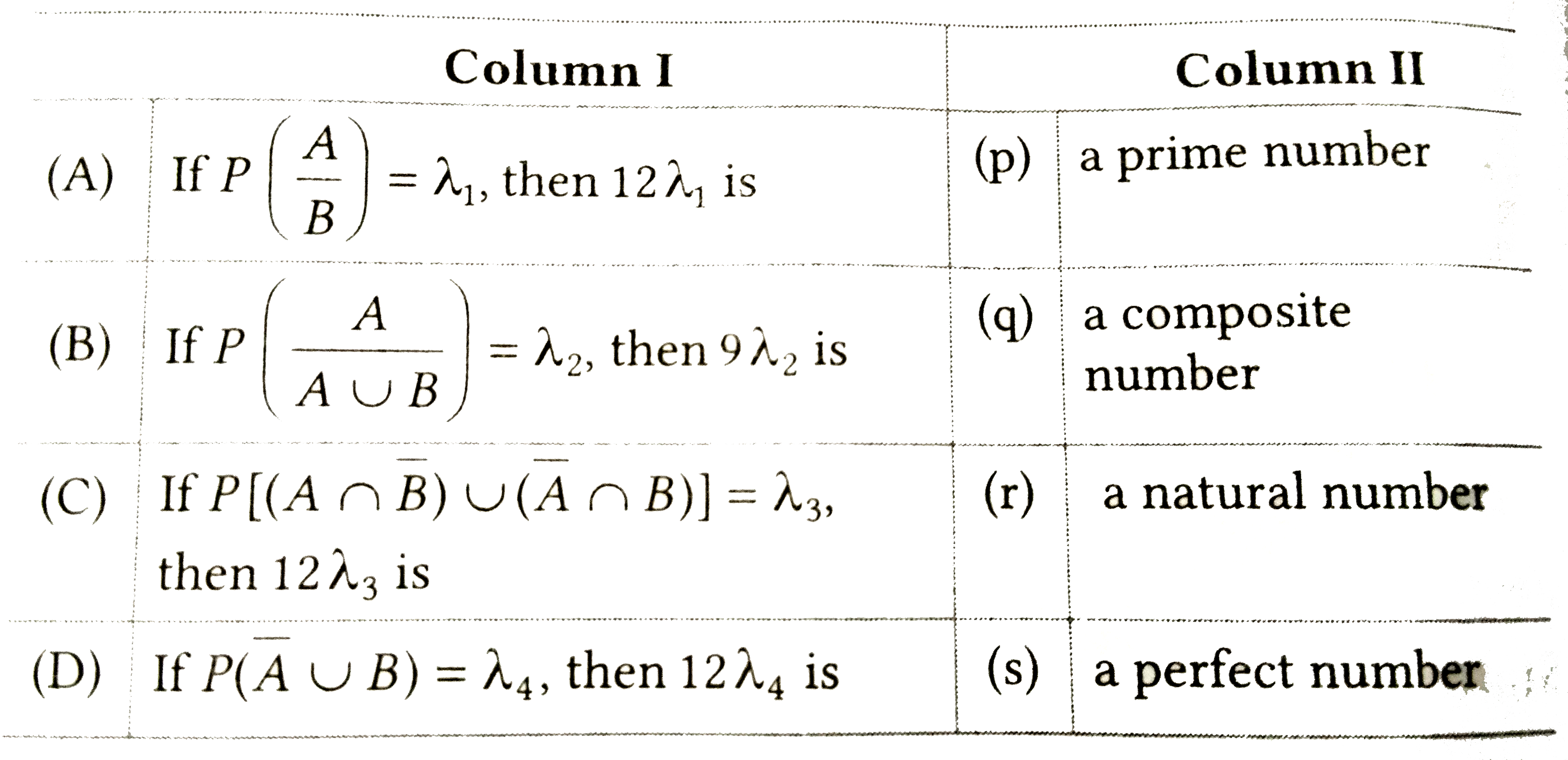If the events A and B are mutually exclusive events such that P(A)=13(3x+1)andP(B)=14(1−x) , then the set of possible values of x lies in the interval
[0,1]
[13,29]
[−13,59]
[−79,49]
The correct Answer is:C
To solve the problem, we need to find the set of possible values of x for the mutually exclusive events A and B given their probabilities.
1. Given Probabilities:
- P(A)=13(3x+1)
- P(B)=14(1−x)
2. Condition for Probability of A:
Since P(A) must be between 0 and 1:
0≤13(3x+1)≤1
- Multiply the entire inequality by 3:
0≤3x+1≤3
- Subtract 1 from all sides:
−1≤3x≤2
- Divide by 3:
−13≤x≤23
3. Condition for Probability of B:
Similarly, for P(B):
0≤14(1−x)≤1
- Multiply the entire inequality by 4:
0≤1−x≤4
- Rearranging gives:
−3≤−x≤1
- Multiplying by -1 (and reversing the inequalities):
3≥x≥−1
- This can also be written as:
−3≤x≤1
4. Condition for the Union of Events:
Since A and B are mutually exclusive, we have:
P(A∪B)=P(A)+P(B)≤1
- Therefore:
13(3x+1)+14(1−x)≤1
- Multiply the entire inequality by 12 (the least common multiple of 3 and 4):
4(3x+1)+3(1−x)≤12
- Expanding gives:
12x+4+3−3x≤12
- Combine like terms:
9x+7≤12
- Subtract 7 from both sides:
9x≤5
- Divide by 9:
x≤59
5. Combining the Ranges:
We now have three inequalities:
- From P(A): −13≤x≤23
- From P(B): −3≤x≤1
- From P(A∪B): x≤59
The intersection of these ranges is:
- The first range gives −13 to 23.
- The second range gives −3 to 1.
- The third range gives −∞ to 59.
The intersection of these ranges is:
−13≤x≤59
Final Result:
The set of possible values of x lies in the interval:
(−13,59)
- P(A)=13(3x+1)
- P(B)=14(1−x)
Since P(A) must be between 0 and 1:
0≤13(3x+1)≤1
- Multiply the entire inequality by 3:
0≤3x+1≤3
- Subtract 1 from all sides:
−1≤3x≤2
- Divide by 3:
−13≤x≤23
Similarly, for P(B):
0≤14(1−x)≤1
- Multiply the entire inequality by 4:
0≤1−x≤4
- Rearranging gives:
−3≤−x≤1
- Multiplying by -1 (and reversing the inequalities):
3≥x≥−1
- This can also be written as:
−3≤x≤1
Since A and B are mutually exclusive, we have:
P(A∪B)=P(A)+P(B)≤1
- Therefore:
13(3x+1)+14(1−x)≤1
- Multiply the entire inequality by 12 (the least common multiple of 3 and 4):
4(3x+1)+3(1−x)≤12
- Expanding gives:
12x+4+3−3x≤12
- Combine like terms:
9x+7≤12
- Subtract 7 from both sides:
9x≤5
- Divide by 9:
x≤59
We now have three inequalities:
- From P(A): −13≤x≤23
- From P(B): −3≤x≤1
- From P(A∪B): x≤59
- The first range gives −13 to 23.
- The second range gives −3 to 1.
- The third range gives −∞ to 59.
−13≤x≤59
The set of possible values of x lies in the interval:
(−13,59)
Similar Questions
Knowledge Check
If A and B are mutually exclusive events, then
AP(B)≤P(¯¯¯A)BP(B)≥P(¯¯¯A)CP(B)=P(¯¯¯A)Dnone of theseIf A and B are mutually exclusive events P(A)=0.35andP(B)=0.45,then P(A∩B) is
A0.45B0.35C0.8D0
If the events A and B are mutually exclusive, then P( A/B) =
View SolutionEvents A, B, C are mutually exclusive events such that P(A)=3x+13,P(B)=1−x4 and P(C)=1−2x2. The set of all possible values of x are in the interval
View SolutionIf A and B are mutually exclusive events such that P(A)=0.35 and P(B)=0.45 , find P(A∪B)
View SolutionIf A and B are mutually exclusive events such that P(A)=0.20 and P(B)=0.30 , find P(A∪B)
View SolutionIf A and B are two independent events, such that P(A)=13andP(B)=14.

View SolutionFor two mutually exclusive events A and B , P(A)=13 and P(B)=14, find (A∪B).
View Solution
